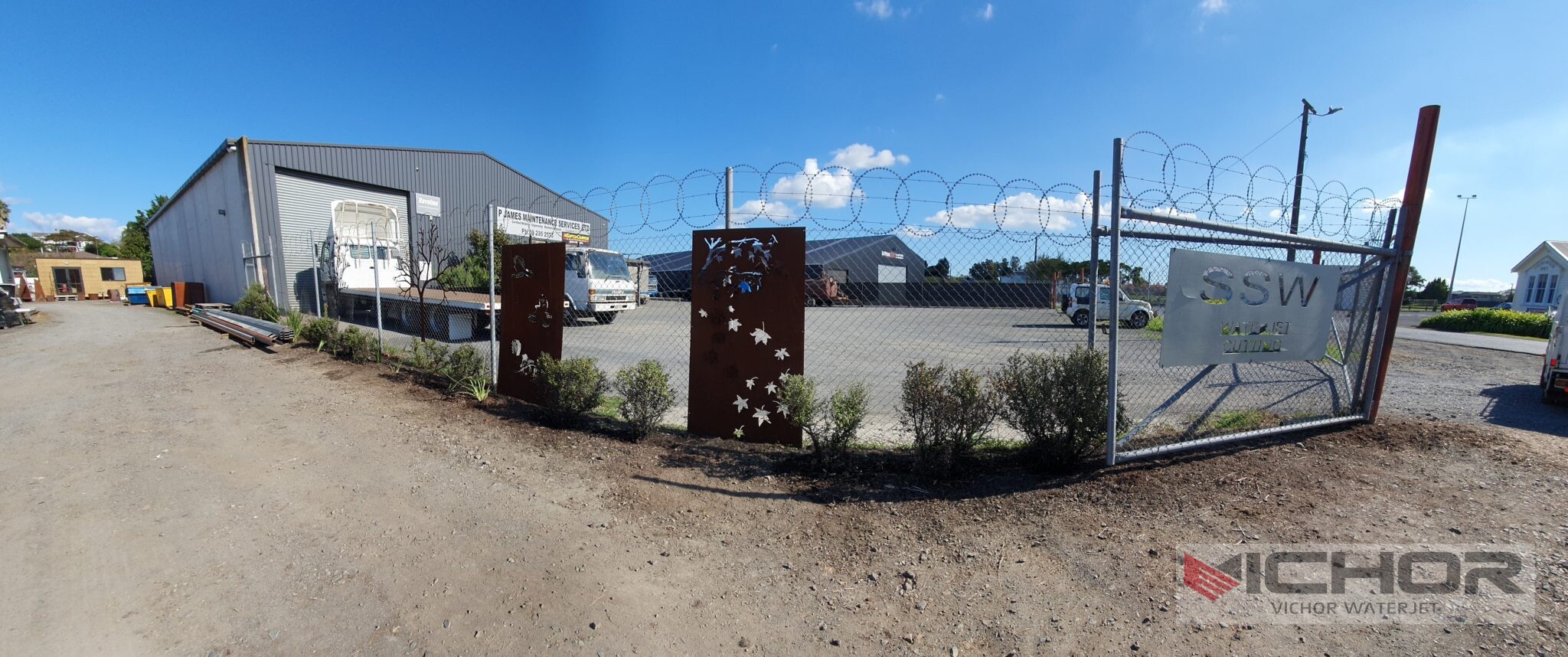
Water Laser Cutting Metal: Precision and Innovation in Modern Manufacturing
In the rapidly evolving world of metal fabrication, efficiency and precision are paramount. Imagine a technology that slices through tough metals with the finesse of a surgeon’s scalpel, yet without the heat damage that often plagues traditional methods. This is where water laser cutting metal comes into play, a groundbreaking approach that combines the power of water jets and laser beams to redefine how industries handle metal cutting. Whether you’re in aerospace, automotive, or custom manufacturing, understanding this hybrid technique can unlock new levels of productivity and quality. In this article, we delve into the intricacies of water laser cutting metal, exploring its mechanisms, benefits, and real-world applications. By the end, you’ll see why this method is gaining traction as a superior alternative to conventional cutting processes.
What is Water Laser Cutting Metal?
**Water laser cutting metal** refers to an advanced hybrid manufacturing process that integrates water jet technology with laser cutting to achieve high-precision results in metalworking. Unlike standalone methods, this technique uses a focused laser beam guided or assisted by a high-pressure water jet to cut through various metals, including steel, aluminum, and titanium. The water serves multiple purposes: it cools the material during cutting, reduces thermal distortion, and helps remove debris, resulting in cleaner edges and minimal heat-affected zones. This synergy makes **water laser cutting metal** ideal for applications demanding extreme accuracy, such as in medical devices or aerospace components. Historically, laser cutting alone could cause warping or oxidation in sensitive metals, but the incorporation of water addresses these issues, paving the way for more efficient and reliable fabrication. As industries seek sustainable and precise solutions, **water laser cutting metal** stands out as a versatile innovation that bridges the gap between speed and quality.
How Water Laser Cutting Metal Works: The Process Explained
The operation of **water laser cutting metal** involves a sophisticated interplay between laser energy and fluid dynamics. First, a high-power laser beam is generated, typically from a fiber or CO2 laser source, and directed toward the metal surface. Simultaneously, a pressurized water jet—often mixed with abrasive particles for harder metals—is emitted alongside or through the laser path. This water jet acts as a guide and coolant, ensuring the laser’s heat is dissipated efficiently to prevent material degradation. The process begins with computer numerical control (CNC) programming, which dictates the cutting path based on digital designs, allowing for intricate patterns and shapes. As the laser ablates or melts the metal, the water stream flushes away molten material, reducing slag and improving cut quality. This method enables **water laser cutting metal** to achieve tolerances as tight as a few micrometers, making it suitable for detailed engravings and complex geometries. Moreover, the water’s cooling effect minimizes the risk of micro-cracks, which are common in dry laser cutting. By optimizing parameters like water pressure, laser power, and feed rate, operators can tailor the process for different metal thicknesses and types, ensuring consistent results across diverse industrial settings.
Key Advantages of Water Laser Cutting Metal
One of the primary reasons **water laser cutting metal** is gaining popularity is its array of benefits over traditional cutting methods. Firstly, it offers superior precision and edge quality, thanks to the combined action of laser and water, which reduces burrs and rough surfaces. This is crucial in industries like electronics, where even minor imperfections can compromise performance. Secondly, the process minimizes thermal stress and heat-affected zones, preserving the metal’s structural integrity and reducing the need for post-processing. This advantage is particularly valuable for heat-sensitive alloys used in automotive or aerospace applications. Thirdly, **water laser cutting metal** is highly versatile, capable of handling a wide range of metals, from thin sheets to thick plates, without requiring tool changes. Additionally, it promotes environmental sustainability by using water as a cooling medium, which can be recycled in closed-loop systems, cutting down on waste and energy consumption. Compared to pure laser cutting, this hybrid approach often leads to longer tool life and lower operational costs due to reduced wear and tear. Overall, these benefits make **water laser cutting metal** a cost-effective and efficient solution for modern manufacturing challenges.
Applications of Water Laser Cutting Metal in Industry
The versatility of **water laser cutting metal** has led to its adoption across various sectors. In the aerospace industry, it is used to fabricate lightweight components with complex shapes, such as turbine blades and structural frames, where precision and material integrity are critical. The automotive sector relies on this technology for producing engine parts, chassis elements, and custom fittings, benefiting from its ability to cut high-strength steels without compromising durability. In medical device manufacturing, **water laser cutting metal** enables the creation of intricate surgical instruments and implants, ensuring sterile, smooth edges that meet strict regulatory standards. The electronics field also leverages this method for crafting precise connectors and shielding components, where minimal thermal impact prevents damage to sensitive circuits. Furthermore, architectural and artistic applications use **water laser cutting metal** to design decorative metalwork and sculptures, taking advantage of its flexibility in handling diverse materials like brass and copper. As industries continue to innovate, the demand for **water laser cutting metal** is expected to grow, driven by its ability to deliver high-quality results in demanding environments.

Challenges and Limitations of Water Laser Cutting Metal
Despite its many advantages, **water laser cutting metal** is not without challenges. One significant limitation is the initial investment cost, as the machinery and setup for hybrid systems can be expensive compared to conventional laser or water jet cutters. This may deter small-scale workshops from adopting the technology. Another issue is maintenance; the integration of water and laser components requires regular upkeep to prevent corrosion, nozzle clogging, or laser alignment problems, which can lead to downtime. Additionally, the process may struggle with extremely reflective metals, such as copper or aluminum, where laser absorption can be inefficient, potentially reducing cut quality. Water quality is also a concern—impurities in the water can affect performance, necessitating filtration systems that add to operational costs. Lastly, while **water laser cutting metal** reduces heat-related defects, it still consumes significant energy, and the disposal of used water and abrasives must be managed environmentally. Addressing these challenges through technological advancements and training can help maximize the benefits of **water laser cutting metal** in the long run.
Comparing Water Laser Cutting Metal with Other Cutting Methods
When evaluating **water laser cutting metal** against other techniques, several distinctions emerge. Traditional laser cutting, for instance, relies solely on thermal energy, which can cause heat distortion and require secondary finishing processes. In contrast, **water laser cutting metal** mitigates these issues through water cooling, resulting in higher accuracy and better surface finishes. Water jet cutting, another common method, uses abrasive-laden water to erode materials but may lack the fine precision of lasers for intricate designs; the hybrid approach of **water laser cutting metal** combines the best of both worlds. Plasma cutting, while fast and cost-effective for thick metals, often produces rougher edges and wider kerf widths, making it less suitable for precision work. Moreover, mechanical methods like sawing or milling can introduce mechanical stresses and tool wear, whereas **water laser cutting metal** offers non-contact processing that reduces material contamination. By understanding these comparisons, manufacturers can choose **water laser cutting metal** for applications where quality and efficiency outweigh initial costs, ensuring optimal outcomes in competitive markets.
The Future of Water Laser Cutting Metal
The future of **water laser cutting metal** looks promising, driven by advancements in automation, material science, and sustainability. Emerging trends include the integration of artificial intelligence and IoT sensors to optimize cutting parameters in real-time, enhancing precision and reducing waste. Researchers are also exploring new laser sources and water jet formulations to improve efficiency on challenging materials, such as composites or superalloys. As industries push for greener manufacturing, **water laser cutting metal** is evolving to use less water and energy, with developments in recycling systems and eco-friendly abrasives. Additionally, the rise of additive manufacturing and 3D printing could see **water laser cutting metal** being combined with these technologies for hybrid fabrication processes. With ongoing innovation, this method is set to become more accessible and affordable, expanding its use in sectors like renewable energy and consumer goods. Ultimately, **water laser cutting metal** represents a key pillar in the next generation of smart manufacturing, offering solutions that balance performance with environmental responsibility.
Frequently Asked Questions
Q1: What types of metals can be cut using water laser cutting metal?
A1: Water laser cutting metal is versatile and can handle a wide range of metals, including stainless steel, aluminum, titanium, brass, and copper. The process is adaptable to various thicknesses and material properties, making it suitable for both soft and hard metals in industries like aerospace and automotive.
Q2: How does water laser cutting metal compare to traditional laser cutting in terms of cost?
A2: While the initial setup cost for water laser cutting metal can be higher due to the hybrid machinery, it often leads to long-term savings by reducing post-processing needs, minimizing material waste, and extending equipment life. Traditional laser cutting might have lower upfront costs but could incur additional expenses for heat treatment or finishing.
Q3: Is water laser cutting metal environmentally friendly?
A3: Yes, water laser cutting metal is considered more environmentally friendly than many traditional methods because it uses water as a cooling and cleaning agent, which can be recycled in closed systems. It also reduces energy consumption by improving efficiency and cuts down on hazardous waste compared to processes involving chemicals or excessive heat.
Q4: What are the main safety considerations when using water laser cutting metal?
A4: Safety measures include protecting operators from high-pressure water jets and laser radiation, ensuring proper ventilation to handle steam or debris, and maintaining equipment to prevent leaks or electrical hazards. Training on handling water and laser components is essential to avoid accidents and ensure compliance with industry standards.
Q5: Can water laser cutting metal be used for delicate or intricate designs?
A5: Absolutely—water laser cutting metal excels at producing intricate designs and fine details due to its high precision and minimal thermal impact. It is commonly used for complex patterns in jewelry, medical devices, and electronic components, where accuracy is critical.
continue reading
Related Posts
- 1991 words10 min read



